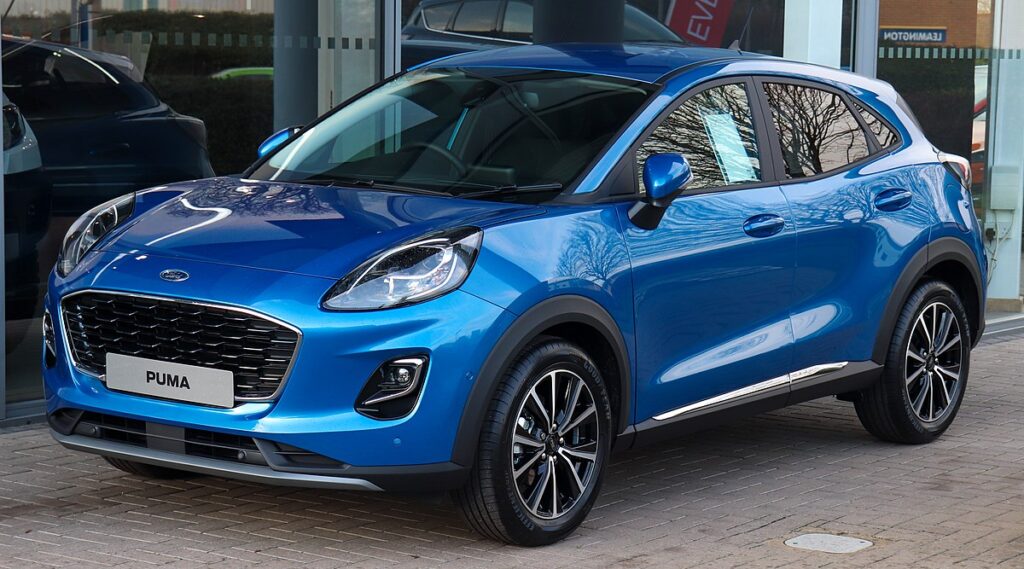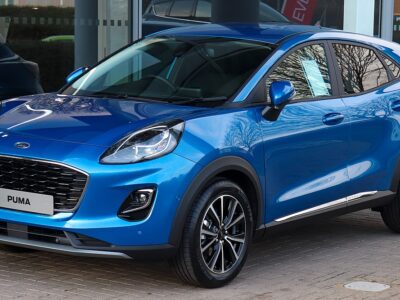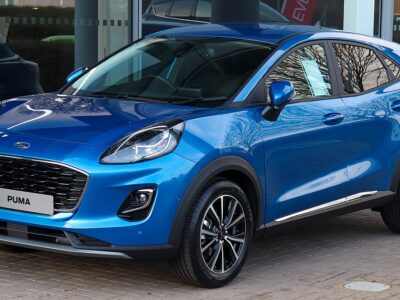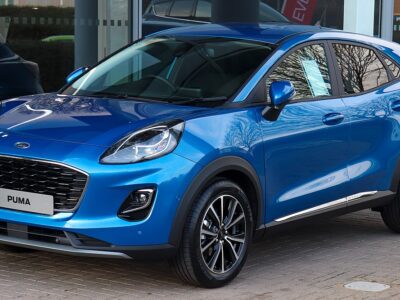
Used Ford Puma Reliability and Common Problems: Complete Buyer’s Guide

Buying a used Ford Puma can be a smart move if you’re seeking a compact SUV with sporty handling, hybrid efficiency, and strong practicality. However, like any used vehicle, it’s crucial to know what to look for before making your purchase. This guide explores the most common Ford Puma problems, reliability ratings, recalls, and essential checks to ensure you get the best deal possible.
Overview: Is the Used Ford Puma Reliable?
While the Ford Puma has earned praise for its comfort, efficiency, and hybrid technology, reliability results are mixed. According to industry reliability surveys, the Puma scored 91.4%, ranking 32nd out of 38 small SUVs. Despite that, 77% of owners reported their cars remained drivable even when faults occurred, and most repairs were completed within a week.
Ford’s brand reliability ranking:
Ford placed 24th out of 30 manufacturers, scoring 90.5%, ranking above Audi, Jaguar, and Nissan but below Toyota and Skoda.
Common Ford Puma Problems
1. Battery and Electrical Issues
A notable portion of owners reported battery drain problems and non-engine electrical faults, particularly affecting hybrid variants. Symptoms may include:
- Warning lights flickering on startup
- Weak cranking or failure to start
- Hybrid system not engaging properly
Tip: Ask the seller if the 12V or hybrid battery has been replaced recently and ensure the charging system is tested before buying.
2. Clutch and Gearbox Problems
Some Puma models exhibit issues with the manual clutch or automatic transmission, including:
- Jerky gear shifts
- Slipping clutch on take-off
- Delayed response in dual-clutch automatics
A smooth and consistent clutch bite point is essential—any hesitation or vibration could suggest wear or previous damage.
Owners have reported software glitches in the SYNC infotainment system, including freezing touchscreens, GPS signal loss, and connection problems with Android Auto or Apple CarPlay.
You may be interested in reading 10 Best Ford Puma Alternatives in 2025: Top Small SUVs Worth Your Money
10 Best Ford Puma Alternatives in 2025: Top Small SUVs Worth Your MoneyCheck for:
- Updated SYNC software
- Proper touchscreen response
- Functioning reversing camera (if equipped)
4. Engine and Oil Separator Issues
Certain Ford Puma units were recalled for engine oil separator defects, which could cause leaks or engine damage if left untreated.
Warning signs:
- Burning oil smell
- Visible oil leakage under the hood
- Low oil level between services
If the recall hasn’t been performed, ensure it’s completed before purchase. Ford dealers inspect and replace the part free of charge.
5. Brake and Suspension Wear
Reports indicate premature brake pad wear and suspension knocking on uneven roads.
Inspect for:
- Uneven brake disc wear
- Noisy front suspension during test drives
- Corroded components beneath the vehicle
Top-spec trims with 19-inch alloy wheels are especially prone to kerb damage and tyre wear, affecting ride comfort and alignment.
Ford Puma Recall Summary
| Recall Issue | Number of Vehicles Affected | Fix Provided by Ford |
|---|---|---|
| Hybrid Battery Connections | 428 | Battery connections checked and torqued to correct specs |
| Driver’s Airbag Retention Springs | 24,249 | Replacement of retention spring module |
| eCall System Software Error | 100 | Software update applied |
| Engine Oil Separator Damage | 9,818 | Inspection and replacement if leaking |
All recall repairs are free of charge, and you can verify your VIN on Ford’s official website or by contacting a Ford dealership.
Owner Satisfaction Insights
What Drivers Love
- Smooth and efficient hybrid system
- Responsive steering and agile handling
- Spacious 456-liter boot (with MegaBox storage)
- Advanced safety and infotainment tech
Common Complaints
- Slight road noise at motorway speeds
- No spare wheel in most trims
- Limited seat adjustability (no electric seats)
- Visibility issues due to thick rear pillars
Despite these minor drawbacks, most owners praise the Puma’s balance of performance, economy, and practicality, making it one of the most engaging small SUVs on the market.
You may be interested in reading 10 Best Ford Puma Alternatives in 2025: Top Small SUVs Worth Your Money
10 Best Ford Puma Alternatives in 2025: Top Small SUVs Worth Your Money Hidden Features of the Ford Puma: The Complete Insider’s Guide
Hidden Features of the Ford Puma: The Complete Insider’s GuideChecklist for Buying a Used Ford Puma
Before finalizing your purchase, follow this essential checklist:
Exterior
- Inspect all alloy wheels for kerb rash or cracks
- Look for scratches, dents, or resprayed panels
- Ensure headlights and rear lights are moisture-free
Interior
- Test infotainment functions (Bluetooth, USB, navigation)
- Inspect seat fabric or leather for wear
- Verify climate control and heated seats work properly
Mechanical
- Check clutch engagement and gear shifting smoothness
- Confirm hybrid battery health with diagnostic scan
- Listen for knocks or rattles from the suspension
- Verify service history includes oil changes every 10,000 miles
Maintenance Recommendations
To ensure long-term reliability:
- Service every 10,000 miles or annually
- Use Ford WSS-M2C948-B 5W-20 oil for EcoBoost engines
- Replace air filter and spark plugs at 30,000 miles
- Update SYNC software regularly via Ford’s website
- Keep hybrid system checked every two years
Verdict: Should You Buy a Used Ford Puma?
Yes — if you choose carefully and verify recall history. The Ford Puma offers strong hybrid efficiency, a dynamic drive, and solid practicality, but it’s essential to inspect for known faults like battery issues, infotainment glitches, and clutch wear.
When maintained correctly, the Puma remains one of the most enjoyable and well-rounded compact SUVs in its class, combining modern styling with Ford’s hallmark driving fun.
Key Takeaways
- Reliability score: 91.4% (mid-tier for small SUVs)
- Common issues: Battery, clutch, infotainment, oil separator
- Recalls: Four official recalls affecting over 35,000 units
- Strengths: Efficiency, comfort, technology, practicality
- Best advice: Always check recall completion and service history
FAQs About Used Ford Puma Reliability
1. Is the Ford Puma hybrid reliable?
Yes, overall reliability is decent, though hybrid battery and electrical issues have been reported in some early models.
2. How can I check if my Puma has an active recall?
Visit Ford’s official website or contact any Ford dealer with your VIN number.
3. What year models are most reliable?
Post-2021 models with updated software and improved hybrid connections show better reliability.
4. Are parts for the Puma expensive?
Not particularly — parts availability is strong, and running costs are moderate compared to other small SUVs.
 10 Best Ford Puma Alternatives in 2025: Top Small SUVs Worth Your Money
10 Best Ford Puma Alternatives in 2025: Top Small SUVs Worth Your Money Hidden Features of the Ford Puma: The Complete Insider’s Guide
Hidden Features of the Ford Puma: The Complete Insider’s Guide Ford Puma vs Peugeot 2008: The Ultimate SUV Comparison for 2025
Ford Puma vs Peugeot 2008: The Ultimate SUV Comparison for 20255. How long does the Puma hybrid battery last?
Typically, 8–10 years with proper maintenance and regular driving.
If you want to know other articles similar to Used Ford Puma Reliability and Common Problems: Complete Buyer’s Guide you can visit the category Blog.
Deja una respuesta





More content of your interest